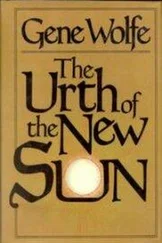Tom Wolfe - The Right Stuff
Здесь есть возможность читать онлайн «Tom Wolfe - The Right Stuff» весь текст электронной книги совершенно бесплатно (целиком полную версию без сокращений). В некоторых случаях можно слушать аудио, скачать через торрент в формате fb2 и присутствует краткое содержание. Жанр: Современная проза, на английском языке. Описание произведения, (предисловие) а так же отзывы посетителей доступны на портале библиотеки ЛибКат.
- Название:The Right Stuff
- Автор:
- Жанр:
- Год:неизвестен
- ISBN:нет данных
- Рейтинг книги:3 / 5. Голосов: 1
-
Избранное:Добавить в избранное
- Отзывы:
-
Ваша оценка:
- 60
- 1
- 2
- 3
- 4
- 5
The Right Stuff: краткое содержание, описание и аннотация
Предлагаем к чтению аннотацию, описание, краткое содержание или предисловие (зависит от того, что написал сам автор книги «The Right Stuff»). Если вы не нашли необходимую информацию о книге — напишите в комментариях, мы постараемся отыскать её.
The Right Stuff — читать онлайн бесплатно полную книгу (весь текст) целиком
Ниже представлен текст книги, разбитый по страницам. Система сохранения места последней прочитанной страницы, позволяет с удобством читать онлайн бесплатно книгу «The Right Stuff», без необходимости каждый раз заново искать на чём Вы остановились. Поставьте закладку, и сможете в любой момент перейти на страницу, на которой закончили чтение.
Интервал:
Закладка:
Even as late as the summer of 1960, at an Armed Forces-National Research Council conference- at Woods Hole, Massachusetts, on "the training of astronauts," various engineers and scientists from outside NASA thought nothing of describing the Mercury rocket-capsule vehicle as a fully automated system in which "the astronaut does not need to turn a hand." They would say, "The astronaut has been added to the system as a redundant component." (A redundant component!) If the automatic system broke down, he might step in as a repairman or manual conductor. Above all, of course, he would be wired with biosensors and a microphone to see how a human being responded to the stress of the flight. That would be his main function. There were psychologists who advised against using pilots at all—and this was more than a year after the famous Mercury Seven had been chosen. The pilot's, particularly the hot pilot's, main psychological bulwark under stress was his knowledge that he controlled the ship and could always do something ("I've tried A! I've tried B! I've tried C!"…). This obsession with active control, it was argued, would only tend to cause problems on Mercury flights. What was required was a man whose main talent was for doing nothing under stress. Some suggested using a new breed of military flier, the radar man, the Air Force Strategic Air Command radar observer or the Navy radar intercept officer, a man who had experience riding in the rear in high-performance aircraft under combat conditions and doing nothing but reading the radar, come what may, abandoning all control of the craft (and protection of his own life) to someone else, the pilot ("I looked over at Robinson—and he was staring at the radar like a zombie!") . An experienced zombie would do fine. In fact, considerable attention had been given to a plan to anesthetize or tranquillize the astronauts, not to keep them from panicking, but just to make sure they would lie there peacefully with their sensors on and not do something that would ruin the flight.
The scientists and engineers took it for granted that the training of the astronauts would be unlike anything ordinarily thought of as flight training. Flight training consisted of teaching a man how to take certain actions. He was taught how to control an unfamiliar craft or how to put a familiar craft through unfamiliar maneuvers, such as bombing runs or carrier landings. On the other hand, the only actions the astronauts would have to learn how to take would be to initiate the emergency procedures in the case of a bad rocket launch or a bad landing and to step in as a backup (redundant component) if the automatic control system failed to hold the heatshield in the correct position prior to re-entry through the earth's atmosphere. The astronaut would not be able to control the path or the speed of the capsule at all. A considerable part of his training would be what was known as de-conditioning, de-sensitizing, or adapting out fears. There was a principle in psychology that maintained that "bad habits, including overstrong emotionality, can be eliminated by a graded series of exposures to the anxiety-arousing stimulus." That was what much of astronaut training was to be. The rocket launch was regarded as a novel and possibly disorienting event, in part because the astronaut would have no control over it whatsoever. So they had devised "a graded series of exposures." They took the seven men to the Navy's human centrifuge facility in Johnsville, Pennsylvania. The centrifuge looked like a Wild Bolo ride; it had a fifty-foot arm with a cockpit, or gondola, on the end of it, and the arm could be whirled around at astonishing speeds, great enough to put up to 40 g's of pressure on the rider inside the gondola, one g being equal to the force of gravity. The high g-forces generated by combat aircraft in dives and turns during the Second World War had sometimes caused blackouts, red-outs, gray-outs, or made it impossible for pilots to lift their hands to the controls; the giant centrifuge at Johnsville had been built to explore this new problem of high-speed flight. By 1959 the machine had been computerized and turned into a simulator capable of duplicating the g-forces and accelerations of any form of flight, even rocket flight. The astronaut was helped into his full pressure suit, with his biosensors attached and his rectal thermometer inserted, and then placed into the gondola, in a contoured seat molded for his body, whereupon all the wires, hoses, and microphones he would have in actual flight were hooked up, and the gondola was depressurized to five pounds per square inch, as it would be in space flight. The interior of the gondola had been converted into a replica of the Mercury capsule's interior, with all the switches and console displays. The taped noise of an actual Redstone rocket firing was played over the astronaut's headset, and the ride began. Using the computers, the engineers would put the man through an entire Mercury flight profile. The centrifuge built up the g-forces at precisely the same rate they would build up in flight, up to six or seven g's, whereupon the g-forces would suddenly drop off, as they would in flight as the capsule went over the top of its arc, and the astronaut experienced a tumbling sensation, as he would, presumably, in flight. All the while the astronaut would be required to push a few switches, as he would in actual flight, and talk to a mock flight controller, forcing his words out into the microphone, no matter how great the pressure of the g-forces on his chest. The centrifuge could also duplicate the pressures of deceleration a man would experience during the return through the earth's atmosphere.
To get the seven men used to weightlessness, they took them on parabolic rides in the cargo holds of C-131 transports and backseat in F-100Fs. When the jet came up over the top of the arc of the parabola, the subject would experience from fifteen to forty-five seconds of weightlessness. This was the only flying scheduled for the astronauts' entire training program; and they were, of course, merely passengers on board, as they would be in the Mercury flights.
The only way the astronaut would be able to move the capsule in the slightest would be to fire hydrogen-peroxide thrusters during the interval of weightlessness, tipping or swinging the capsule this way or that, in order to get a particular view out the portholes, for example. NASA built a machine, the ALFA trainer, to accustom each trainee to the sensation. He sat in a seat resting on air bearings and used a hand controller to make it pitch up and down or yaw back and forth. On a screen in front of him, where the capsule's periscope screen would be, aerial photographs and films of the Cape, the Atlantic Ocean, Cuba, Grand Bahama Island, Abaco, all the landmarks, rolled by… and veered off as the astronaut pitched or yawed, just as they would in actual flight. The ALFA even made a whooshing sound like that of hydrogen-peroxide thrusters when the astronaut pushed the stick.
By mid-1960 the engineers had developed the "procedures trainer," which was in fact a simulator. There were identical procedures trainers at the Cape and at Langley. At the Cape the trainer was in Hangar S. It was there that the astronaut spent his long day's training. He climbed into a cubicle and sat in a seat that was aimed straight up at the roof. The back of the seat was flat on the floor of the cubicle, so that the astronaut rested on his back. He looked up at a replica of a console that would be used in the Mercury capsule. It was as if he were on top of the rocket, with his face aimed at the sky. The console was wired to a bank of computers. About twenty feet behind the astronaut, on the floor of Hangar S, sat a technician at another console, feeding simulated problems into the system. The technician would start off saying, "Count is at T minus fifty seconds and counting."
Читать дальшеИнтервал:
Закладка:
Похожие книги на «The Right Stuff»
Представляем Вашему вниманию похожие книги на «The Right Stuff» списком для выбора. Мы отобрали схожую по названию и смыслу литературу в надежде предоставить читателям больше вариантов отыскать новые, интересные, ещё непрочитанные произведения.
Обсуждение, отзывы о книге «The Right Stuff» и просто собственные мнения читателей. Оставьте ваши комментарии, напишите, что Вы думаете о произведении, его смысле или главных героях. Укажите что конкретно понравилось, а что нет, и почему Вы так считаете.











